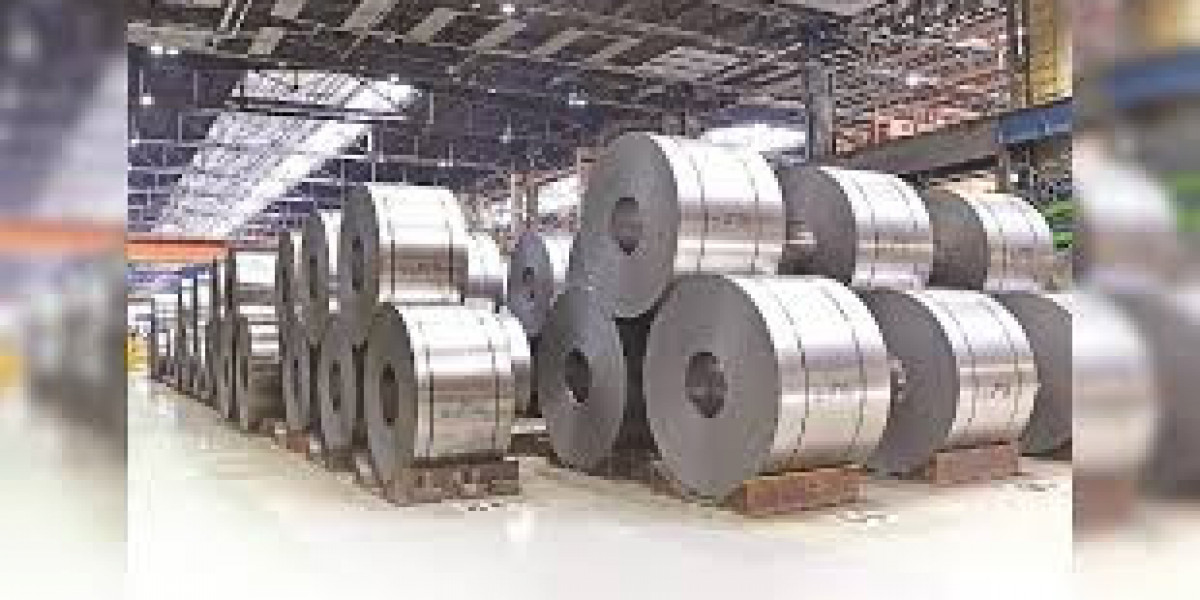Green Steel Market growth patterns across Asia, Europe, and North America reveal distinct regional priorities, technological readiness, and policy frameworks driving sustainability. Each region has adopted unique approaches to decarbonization, influenced by economic structures, regulatory environments, and resource availability. While Europe leads in policy-driven transformation, Asia dominates production capacity and technological scaling, and North America focuses on renewable integration and innovation partnerships. Together, these regions represent the foundation of the global green steel ecosystem, propelling industrial change toward a low-carbon future.
Europe’s Policy-Led Sustainability Transformation
Europe remains the frontrunner in green steel development due to its strong policy backing and early commitment to decarbonization. The European Union’s Green Deal, Fit for 55 package, and carbon border adjustment mechanisms are compelling steel producers to transition toward low-emission production. Several European steelmakers, particularly in Sweden, Germany, and Finland, are advancing hydrogen-based direct reduction technologies and electrified arc furnaces. Projects such as HYBRIT and SALCOS demonstrate Europe’s leadership in aligning industrial strategy with climate objectives. Strict environmental standards and carbon pricing schemes ensure accountability, pushing continuous innovation across the region.
Hydrogen Adoption Across European Steel Plants
Hydrogen plays a central role in Europe’s green steel roadmap. With abundant wind and hydropower resources, countries like Sweden and Norway are producing renewable hydrogen to fuel pilot plants. The EU’s Hydrogen Strategy further supports infrastructure expansion and funding. European manufacturers are integrating green hydrogen with direct reduction iron processes to eliminate fossil fuel use. As these technologies mature, Europe is expected to achieve large-scale production of zero-carbon steel within the next decade, reinforcing its global leadership in sustainable metallurgy.
Asia’s Dominance in Steel Production and Transition Challenges
Asia, particularly China, India, Japan, and South Korea, accounts for the majority of global steel output. This dominance poses unique challenges in decarbonization due to scale, existing infrastructure, and energy reliance on coal. However, significant progress is underway. China’s 2060 carbon neutrality pledge and Japan’s Green Transformation strategy are pushing the region toward cleaner manufacturing. India is exploring low-carbon pathways through renewable-powered electric arc furnaces and green hydrogen pilot projects. While Asia’s transition is complex, its rapid technological adaptation and resource investment indicate strong long-term potential for sustainability leadership.
China’s Strategic Focus on Industrial Efficiency
China’s approach combines efficiency optimization with renewable expansion. Through its “Dual Carbon” targets, China aims to peak emissions before 2030 and achieve neutrality by 2060. The government is prioritizing energy efficiency upgrades, carbon capture systems, and recycling initiatives across major steel plants. Advanced automation and digital systems are improving operational control, ensuring energy savings without compromising output. Although hydrogen-based steelmaking remains at the pilot stage, China’s scale of investment in research and development positions it to become a major player in future green steel technologies.
Japan and South Korea’s Technology-Driven Roadmap
Japan and South Korea are leveraging their strong industrial bases to pioneer green steel innovations. Japan’s COURSE50 and SuperCOURSE50 projects are developing hydrogen and carbon recycling technologies to minimize emissions from blast furnaces. South Korean steelmakers, led by POSCO, are investing heavily in hydrogen reduction methods and renewable energy integration. Both nations emphasize research collaboration and technological export, helping spread sustainable practices across the broader Asian region. Their focus on innovation and global partnerships underscores Asia’s shift toward technologically sophisticated green steel production.
India’s Emerging Green Steel Initiatives
India, as one of the fastest-growing steel producers, faces the challenge of balancing economic expansion with sustainability. Government initiatives under the National Green Hydrogen Mission are promoting hydrogen adoption within the steel industry. Private players are exploring renewable-based manufacturing models and modern electric arc furnaces to reduce dependency on coal. The combination of policy support and private investment is creating opportunities for India to become a global hub for affordable, low-carbon steel production in the coming years.
North America’s Balanced Approach to Green Steel
North America’s green steel development is defined by innovation partnerships, renewable energy integration, and market-driven progress. The United States and Canada are implementing strategies that balance industrial competitiveness with environmental responsibility. Tax incentives under the U.S. Inflation Reduction Act encourage hydrogen production and carbon capture deployment. North American producers are investing in recycling technologies and electric arc furnaces powered by clean electricity. The region’s focus on economic feasibility and technological diversification ensures a resilient, adaptable path toward sustainable steelmaking.
United States: Emphasis on Renewable Integration and Recycling
The United States leads in integrating renewable power and recycled feedstock into steel production. With a well-established electric arc furnace infrastructure, the U.S. steel industry already achieves lower emissions per ton compared to traditional methods. Ongoing investments in renewable hydrogen and advanced grid systems further support the shift toward zero-carbon steel. American companies are forming strategic partnerships with technology firms to implement smart manufacturing solutions that enhance efficiency and transparency across the supply chain. This collaborative innovation approach keeps North America at the forefront of industrial modernization.
Canada’s Low-Carbon Transition Strategy
Canada’s strategy centers on leveraging its abundant clean energy resources and policy frameworks to enable green steelmaking. Provincial governments are supporting industrial transformation through funding for hydrogen projects and carbon capture facilities. Major producers are upgrading existing plants to reduce emissions while exploring pathways to electrification. Canada’s commitment to sustainability and circular economy models reflects its ambition to become a leader in low-emission industrial production within North America and beyond.
Comparative Analysis of Regional Approaches
Europe’s policy enforcement, Asia’s production scale, and North America’s innovation synergy collectively define the global green steel trajectory. Europe’s strict regulations ensure accountability and accelerate research adoption, while Asia’s vast output capacity provides scale for technological experimentation. North America’s pragmatic, innovation-oriented model fosters cost-effective adoption and collaborative growth. Together, these approaches create a diversified global network of innovation and implementation, strengthening the overall resilience of the green steel market.
Investment Trends Across Key Regions
Investment in green steel technologies varies significantly by region. Europe attracts the largest share of funding through public-private partnerships and EU-backed programs. Asia’s investment is primarily industry-driven, with major conglomerates focusing on self-funded pilot projects. North America’s venture capital and private equity participation have increased due to policy incentives. Global investors are increasingly evaluating regional sustainability standards and long-term profitability, shaping investment flows toward regions demonstrating technological and regulatory readiness.
Challenges and Opportunities by Region
Each region faces distinct challenges. Europe must address high operational costs and energy dependence, Asia grapples with coal-based infrastructure, and North America navigates regulatory complexities. However, all regions share opportunities in innovation, collaboration, and renewable integration. Joint technology development, knowledge exchange, and global trade policies will determine how fast each region can scale sustainable steel production. The convergence of policy ambition and industrial modernization is expected to accelerate this global transformation.
Global Collaboration Toward a Unified Green Steel Vision
Despite regional differences, international collaboration remains critical. Platforms such as the Global Steel Climate Council and Mission Possible Partnership are aligning standards and facilitating technology transfer. Collaborative efforts in research, funding, and certification are bridging regional gaps, ensuring that green steel innovation benefits the global market. As regions synchronize their sustainability goals, a unified global framework for carbon-neutral steelmaking becomes achievable.
Future Outlook
The regional diversity of the Green Steel Market ensures balanced progress across policy, technology, and production capacity. Europe will continue leading in regulatory frameworks, Asia will dominate scaling and industrial integration, and North America will drive innovation and renewable adaptation. The interplay among these regions will determine the speed and scope of the global steel industry’s transformation toward carbon neutrality. The next decade will witness stronger cooperation, digital adoption, and technological breakthroughs, cementing green steel as a cornerstone of sustainable industrialization.
Conclusion
The comparison among Asia, Europe, and North America highlights how regional diversity accelerates the global green steel movement. Europe’s governance-led model, Asia’s industrial capacity, and North America’s innovation synergy together form a powerful foundation for sustainable transformation. As collaboration deepens and technology matures, these regions will collectively redefine the future of global steel production, ensuring economic competitiveness and environmental stewardship for decades to come.






